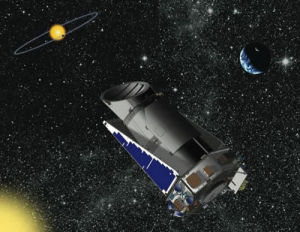Basic Characteristics
name: life in 16th - and 17th - century German astronomer Johannes Kepler, named after name: life in 16th - and 17th - century German astronomer Johannes Kepler, named after . he discovered the famous" Kepler three laws of planetary motion ", is to contribute greatly to the development of astronomy he discovered the famous" Kepler three laws of planetary motion ", is to contribute greatly to the development of astronomy .
emission time: spacecraft in 2009 U.S. Eastern Standard Time on 6 March 10: 49: 57 by a Delta II launch vehicle from Cape Canaveral Air Force Base, Florida for the launch of the shape: the body is formed in a substantially cylindrical shape and has a diameter of 2.7 m and a length of 4. 7 meters
function: which is carried by the spectrophotometer equipped with a diameter of 95 cm of the lens,is also equipped with a 95 megapixel CCD photosensitive device function: which is carried by the spectrophotometer equipped with a diameter of 95 cm of the lens,is also equipped with a 95 megapixel CCD photosensitive device . it with extremely sensitive observation ability, and can be found on Earth on the evening of a normal lamp is turned off the light. Not lip - safe
track: around the sun, with orbits and Earth orbit basically coincides with a period of approximately 372 days track: around the sun, with orbits and Earth orbit basically coincides with a period of approximately 372 days . task: design as a 3. 5 years, as may be extended to 6 years
it will remain in the constellations Cygnus and Lyra in the target area of about 10 million stars and solar system similar to that of the system of observation, hoping "to a region of a planet in transit, and to deduce the presence or absence of terrestrial planets it will remain in the constellations Cygnus and Lyra in the target area of about 10 million stars and solar system similar to that of the system of observation, hoping "to a region of a planet in transit, and to deduce the presence or absence of terrestrial planets . 1 2 1 2.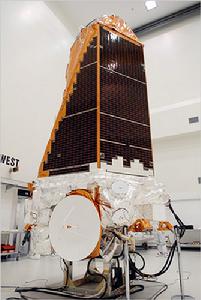
Structural Performance
1, space spectrometer: 0. 95 - meter aperture; 1.2: 1. 4 meters, 85 percent of the hollow structure; 3, a CCD detection mirror: 95 million pixels (42 2200x1024 pixel electronic coupler); 4, a band - pass: the peak width at half maximum of 430 - 890 nm; 5, the dynamic detection range: 9 - 16 and the magnitude (the magnitude of the stars"); 6, the quality of the guidance sensors: 4 CCDs (Charge - Coupled device () is positioned in the focal plane; 7, scientific data storage time: greater than 60 days; 8, the X band uplink:7.8125 bps - kbps; 9, Downlink X - band: 10 bps to 16 kbps -; 10, downlink Ka - band: a maximum of 4. 33125 Mbps; (11), the disposable device, all of the mechanical device to the surface covering layer, there are three main mirror focusing device 12, the flight assembly and assembling instrument mass: 1071 kg (expected maximum); 13, flying components and assembly of the instrument power: 771 W (expected maximum)
Running Track
Kepler is not in orbit around the Earth, but trailing the Earth in orbit around the Sun, the Earth is not covered by the continuous line), the photometer is also not affected by the influence of the diffused rays from Earth Kepler is not in orbit around the Earth, but trailing the Earth in orbit around the Sun, the Earth is not covered by the continuous line), the photometer is also not affected by the influence of the diffused rays from Earth . tracks to avoid the perturbation in gravity and Earth's orbit inherent torque, there may be a more stable observation platform tracks to avoid the perturbation in gravity and Earth's orbit inherent torque, there may be a more stable observation platform .
photometer directed the constellations Cygnus and Lyra in your area, away from the ecliptic plane, and on condition that the sun, sunlight will not leak into the photometer within photometer directed the constellations Cygnus and Lyra in your area, away from the ecliptic plane, and on condition that the sun, sunlight will not leak into the photometer within . Cygnus is not caught in the asteroid belt or Kuiper Belt objects to the shield,So in observation on was a good choice.
being selected so as to provide the additional benefit of Kepler is pointing in the direction of the solar system around the center of the Galaxy, Kepler observed stellar and galactic center distance are generally in line with the solar system is the same, and both close to the Milky Way's disk touches the being selected so as to provide the additional benefit of Kepler is pointing in the direction of the solar system around the center of the Galaxy, Kepler observed stellar and galactic center distance are generally in line with the solar system is the same, and both close to the Milky Way's disk touches the . This is a very important fact, also if a galaxy has a habitable zone - the location, as provided in recommendation of Earth hypothesis This is a very important fact, also if a galaxy has a habitable zone - the location, as provided in recommendation of Earth hypothesis .
dispar dispar.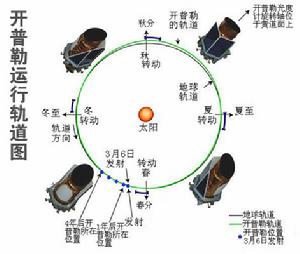
The Principle Of Detection Of The
Kepler is a space telescope, designed for detection of the distant stars have Earth - like planets to determine how high the universality of the Kepler is a space telescope, designed for detection of the distant stars have Earth - like planets to determine how high the universality of the . Kepler will use the "transit method" to detect indirectly the planets except Kepler will use the "transit method" to detect indirectly the planets except .
reveal the existence of one, the light signal can also tell our planet's volume and thereafter reveal the existence of one, the light signal can also tell our planet's volume and thereafter . orbit, scientists will use other measuring methods discovered in the orbit of each of the planet habitable zones is adapted to be located, or measure the planet around its star, its surface in order to determine whether there is liquid water orbit, scientists will use other measuring methods discovered in the orbit of each of the planet habitable zones is adapted to be located, or measure the planet around its star, its surface in order to determine whether there is liquid water .
its planetary detection principle is as follows:When the stars in the system of the planet to the Kepler star, the planet of occlusion, Kepler photometer sensor received stellar brightness will weaken its planetary detection principle is as follows:When the stars in the system of the planet to the Kepler star, the planet of occlusion, Kepler photometer sensor received stellar brightness will weaken . scientists may be ground according to the brightness of a star such periodic changes to the planet size and orbital period and the like data scientists may be ground according to the brightness of a star such periodic changes to the planet size and orbital period and the like data .
Keplerian telescope can detect such changes of brightness may be as small as about 10 ppm Keplerian telescope can detect such changes of brightness may be as small as about 10 ppm . this technology have been scientists use approximately a decade, and help astronomers found more than 300 large planetary this technology have been scientists use approximately a decade, and help astronomers found more than 300 large planetary .
while Kepler telescope will target the smaller planets, like Earth - sized planets inhabitable,They are around its parent star every while Kepler telescope will target the smaller planets, like Earth - sized planets inhabitable,They are around its parent star every . 3 3.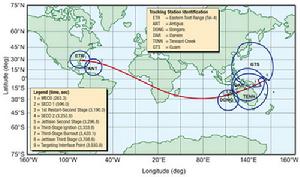
Goals
The Kepler mission is the scientific goal is to detect extrasolar planets system of structure and diversity of The Kepler mission is the scientific goal is to detect extrasolar planets system of structure and diversity of . more specifically, through observations of stellar implemented task more specifically, through observations of stellar implemented task .
1: determine a variety of spectral type star in the habitable zone around or near the frequency of occurrence of large terrestrial planets 1: determine a variety of spectral type star in the habitable zone around or near the frequency of occurrence of large terrestrial planets . planet occurrence frequency can be found in a planetary system and volume and also the monitoring of the stellar spectral type and determined planet occurrence frequency can be found in a planetary system and volume and also the monitoring of the stellar spectral type and determined .
even one invalid results also will have a lasting influence, and the reason is required for the detection of the incredible number of stars and a low false alarm rate even one invalid results also will have a lasting influence, and the reason is required for the detection of the incredible number of stars and a low false alarm rate . Task 2:of these planets, as well as the volume of the semi - major axis distribution Task 2:of these planets, as well as the volume of the semi - major axis distribution .
planetary volume a slight weakening of the brightness and the volume for a stellar planetary volume a slight weakening of the brightness and the volume for a stellar . in statistically significant terms exceeds eight sigma detection, planetary region of the error is around 14 percent of the planetary radius error is 7% in statistically significant terms exceeds eight sigma detection, planetary region of the error is around 14 percent of the planetary radius error is 7% .
planetary orbital semi - major axis can be according to Kepler's Third Law by measuring the period of the planet and its star planetary orbital semi - major axis can be according to Kepler's Third Law by measuring the period of the planet and its star . mass due to the quality of error of 3%, the semi - major axis of the error should be about 1 per cent of their stellar mass may be ground using spectroscopy to observe stars and models, which obtain mass due to the quality of error of 3%, the semi - major axis of the error should be about 1 per cent of their stellar mass may be ground using spectroscopy to observe stars and models, which obtain .
3 tasks:it is necessary to estimate the stellar system of planetary orbits and the appearance frequency distribution 3 tasks:it is necessary to estimate the stellar system of planetary orbits and the appearance frequency distribution . 7 by comparison with a multi - planet system as opposed to a single star system discovered planetary systems implemented 7 by comparison with a multi - planet system as opposed to a single star system discovered planetary systems implemented .
number if the distance is close to a multiple - star system may be confirmed by observation through the spectroscope is on the ground; if the distance apart, by a high angular resolution observations confirmed number if the distance is close to a multiple - star system may be confirmed by observation through the spectroscope is on the ground; if the distance apart, by a high angular resolution observations confirmed . task 4: it is determined that the short operating cycles of the giant planet's semimajor axis, albedo, volume, mass and density distribution of task 4: it is determined that the short operating cycles of the giant planet's semimajor axis, albedo, volume, mass and density distribution of .
short running period giant planets may also be modified in such a way that they change in the reflected light is detected, the semi - major axis by the orbital period and stellar mass determined short running period giant planets may also be modified in such a way that they change in the reflected light is detected, the semi - major axis by the orbital period and stellar mass determined . in carry out this task,This corresponds to the diameters of the planet HD 209458 b density is consistent with the approach taken by the in carry out this task,This corresponds to the diameters of the planet HD 209458 b density is consistent with the approach taken by the .
task 5: using complementary techniques, each determined by photometric determination of the discovery of additional members of the planetary system using task 5: using complementary techniques, each determined by photometric determination of the discovery of additional members of the planetary system using . Space interferometry mission "space telescope and ground - based observation of the obtained Doppler spectroscopy, can be used in searching for the occurrence of no additional large - mass planetary transits, which in turn provides data about each discovered planetary system and more details of task Space interferometry mission "space telescope and ground - based observation of the obtained Doppler spectroscopy, can be used in searching for the occurrence of no additional large - mass planetary transits, which in turn provides data about each discovered planetary system and more details of task .
6: determine these stars with planetary systems 6: determine these stars with planetary systems . characteristics occurs when the event, using ground - based observations per star of spectral type luminosity classes and metallic characteristics occurs when the event, using ground - based observations per star of spectral type luminosity classes and metallic .
rotation rate,surface unevenness of the brightness and stellar activity can be directly determined by photometric data kept rotation rate,surface unevenness of the brightness and stellar activity can be directly determined by photometric data kept . stellar age and mass by Kepler P mode measurement (asteroseismology) stellar age and mass by Kepler P mode measurement (asteroseismology) .
determine more such task results may be used to support the "origin" tasks, "the space interferometry mission" and "Terrestrial Planet Finderand determine more such task results may be used to support the "origin" tasks, "the space interferometry mission" and "Terrestrial Planet Finderand . detector as follows: 1. To the future ruler on the planet - hunting mission determined common characteristics. The delimitation of search engine results in the regions of space
3." Space Interferometry Mission, "provides a list of targets to be detected, i.e. the presence of the known planets in the system's orientation 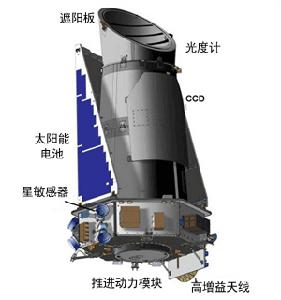
Task Operation
Kepler space telescope by outside Colorado Boulder Laboratory of Atmospheric and Space Physics (LASP), and operated by Kepler space telescope by outside Colorado Boulder Laboratory of Atmospheric and Space Physics (LASP), and operated by . solar arrays located in a year when the equinoxes and solstices of the sun on the positive direction, the rotation of these will be used to optimize the array on the sunlight is irradiated, and the heat radiator to maintain pointing in the direction of the deep space while solar arrays located in a year when the equinoxes and solstices of the sun on the positive direction, the rotation of these will be used to optimize the array on the sunlight is irradiated, and the heat radiator to maintain pointing in the direction of the deep space while .
,LASP and Bell company orbital technologies (the company responsible for the construction of the spacecraft and instrument) from Colorado Boulder University of Colorado at the control centers of operation ,LASP and Bell company orbital technologies (the company responsible for the construction of the spacecraft and instrument) from Colorado Boulder University of Colorado at the control centers of operation . LASP performs essential mission planning and initial science data collection and distribution work twice a week through LASP performs essential mission planning and initial science data collection and distribution work twice a week through .
NASA X - band of the communication line to the spaceship, and enter a command into the update a status, once each month using the Ka - band download scientific data, the maximum transmission rate is 4. 33Mb / s Kepler spacecraft is on the boat with their own partial analysis of data, only when necessary will transfer scientific data,to keep the Kepler spacecraft is on the boat with their own partial analysis of data, only when necessary will transfer scientific data,to keep the .
bandwidth during a mission by the LASP collected telemetry scientific information will be sent to Baltimore, Maryland on the campus of the Johns Hopkins space telescope Kepler College of Technical Data Management Center (DMC) bandwidth during a mission by the LASP collected telemetry scientific information will be sent to Baltimore, Maryland on the campus of the Johns Hopkins space telescope Kepler College of Technical Data Management Center (DMC) . these science data telemetry is decoded and processed into uncalibrated FITS - format science and by the DMC, product data,Then by NASA of Amy's Center for the Study of the Science Operations Center (SOC) and the last SOC returned to the processing of these science data telemetry is decoded and processed into uncalibrated FITS - format science and by the DMC, product data,Then by NASA of Amy's Center for the Study of the Science Operations Center (SOC) and the last SOC returned to the processing of .
corrected and processed data products and scientific results to make long - term archiving of DMC and via a multi - tasking (MAST) archives of dispensation of astronomers around the world corrected and processed data products and scientific results to make long - term archiving of DMC and via a multi - tasking (MAST) archives of dispensation of astronomers around the world .
SURVEYING DATA
On December 5, 2011, through NASA Kepler space telescope has confirmed the project's first extra - solar Earth - like, habitable planets, Kepler - 22b, the radius of the Earth and a radius of 2. 4 times scientists says the planet's surface temperature is about 70 degrees Fahrenheit (21 degrees Celsius), they are very suitable biological living scientists says the planet's surface temperature is about 70 degrees Fahrenheit (21 degrees Celsius), they are very suitable biological living .
Furthermore, it is also possible to have liquid water, while liquid water is regarded as scientists support the existence of Furthermore, it is also possible to have liquid water, while liquid water is regarded as scientists support the existence of . 4 4.
To Forgo The Visit
In May 2013, searching for exoplanets in terms of the most powerful of the NASA Kepler space telescope, a major fault, a satellite base to stop the normal work of observation, if nasa engineers cannot be promptly repaired them, then the $6 billion of projects into the space may be prematurely aborted In May 2013, searching for exoplanets in terms of the most powerful of the NASA Kepler space telescope, a major fault, a satellite base to stop the normal work of observation, if nasa engineers cannot be promptly repaired them, then the $6 billion of projects into the space may be prematurely aborted . 5 August 2013 19 according to a NASA Web site reported, months of analysis and tests, the NASA Kepler telescope project team has formally renounced the world and coexist with the telescope fully restored to the work of state efforts,turned to account in the current adverse conditions, the telescope device can assume the form of scientific tasks 5 August 2013 19 according to a NASA Web site reported, months of analysis and tests, the NASA Kepler telescope project team has formally renounced the world and coexist with the telescope fully restored to the work of state efforts,turned to account in the current adverse conditions, the telescope device can assume the form of scientific tasks .
6 Kepler telescope already in November, 2012 completed its primary science mission, and the start of its original plan of a four - year planning of an extension to the 6 Kepler telescope already in November, 2012 completed its primary science mission, and the start of its original plan of a four - year planning of an extension to the .. The main task of science is the search for extrasolar orbiting distant stars with exoplanets
body however he would have had to cobble together the three reaction wheels maintain the telescope of the normal working state, the decision was made while orders already placed prior to collecting large amounts of data for analysis by a team of engineers attempting to react to a fault, for example, to perform repair,while actively considering if the repair fails, this advanced space telescope yet can still undertake some other types of science mission body however he would have had to cobble together the three reaction wheels maintain the telescope of the normal working state, the decision was made while orders already placed prior to collecting large amounts of data for analysis by a team of engineers attempting to react to a fault, for example, to perform repair,while actively considering if the repair fails, this advanced space telescope yet can still undertake some other types of science mission .
Configurations And System Performance
1, space spectrometer: 0. 95 - meter aperture; 1.2: 1. 4 meters, 85 percent of the hollow structure; 3, a CCD detection mirror: 95 million pixels (42 2200x1024 pixel electronic coupler); 4, a band - pass: the peak width at half maximum of 430 - 890 nm; the instruments constituting the system configurations and performance and the performance of the system 5, the dynamic detection range: 9 - 16 and the magnitude (the magnitude of the stars"); 6, the quality of the guidance sensors: 4 CCDs (Charge - Coupled device () is positioned in the focal plane; 7, scientific data storage time:greater than 60 days; 8, Uplink X - band: 7.8125 bps - kbps; 9, Downlink X - band: 10 bps to 16 kbps -; 10, downlink Ka - band: a maximum of 4. 33125 Mbps; (11), the disposable device, all of the mechanical device to the surface covering layer, there are three main mirror focusing device 12, the flight assembly and assembling instrument mass: 1071 kg (expected maximum); 13, flying components and assembly of the instrument power: 771 W (expected maximum)
